The top violations spotted during fire sprinkler and standpipe inspections
Every facility with an automatic sprinkler and/or standpipe system is required to maintain and stay in fire protection compliance according to locally enforced codes adopted by the authority having jurisdiction (AHJ). The codes reference NFPA 25: Standard for the Inspection, Testing, and Maintenance of Water-Based Fire Protection Systems.
This article, part one in a two-part series, begins to cover the top 10 cited NFPA 25 deficiencies according to Jack Coffelt, National Operations Manager for Siemens Industry, Inc., a national fire protection inspection, testing, and maintenance (ITM) contractor.
While each of the items on this list is a compliance issue, the good news is you can avoid all of them by asking simple questions. So, we’ve presented the top 10 issues as a series of questions you should ask each time you prepare for a fire inspection.

Bookmark this page, as it’s a great tool to learn about frequent deficiencies and fix them long before the fire marshal arrives. The best part? Many of the most common issues can be safely addressed by a facility manager or building owner with assistance from a fire protection pro.
Feel free to click any question in the below table of contents to view the answer, relevant NFPA 25 references, and a straightforward solution.
Table of Contents
- Is my fire sprinkler gauge too old?
- Are my fire sprinkler pipes obstructed?
- Are the fire pump packing glands overtightened?
- Does my fire sprinkler system have a sprinkler head wrench?
- Is my fire protection system missing the required signs?
- Has my Fire Department Connection been hydrostatically tested within the last 5 years?
- Do I have enough spare fire sprinklers in the cabinet?
- Are any tamper or flow switches missing covers?
- Are any of my fire sprinkler heads painted, caulked, or loaded?
- Does my system have a legible, complete hydraulic calculation sign?
Without further ado, here’s part one of the 10 Most Common Fire Protection Compliance Issues and How to Avoid Them!
1. Fire protection compliance issue: Is my fire sprinkler or standpipe gauge too old?
If any gauge on your fire sprinkler or standpipe system is 5 years old or older and hasn’t had a recent calibration test, it is too old! Out-of-date gauges are the most cited compliance issue during a fire protection system inspection in Coffelt’s experience. Fortunately, it’s very easy to spot old pressure gauges: the date is stamped on the face, as shown in the above image. While recalibration is an option, replacing an old gauge is often the easiest inexpensive solution. Go look at yours, we’ll wait. If any gauges are older than 5 years, replace (or recalibrate) them.
Pressure gauges are common components in fire protection systems. They are found on fire pumps, backflow preventers, pressure-reducing valves, and all types of fire sprinkler systems (wet, dry, preaction, and deluge). Gauges are installed to indicate the air or water pressure within the systems, portions of it, and the pressures from an air or water supply. Most pressure gauges are mechanical, meaning they have interior springs that are subject to deterioration, loss of tension, corrosion, and physical damage. This explains why NFPA requires replacement or re-calibration every five years:
From the 2023 edition of NFPA 25
13.2.4.2* Gauges shall be replaced every 5 years or tested every 5 years by comparison with a calibrated gauge.
13.2.4.3 Gauges not accurate to within 3 percent of the full scale shall be recalibrated or replaced.
While a gauge is not a critical component for a fire sprinkler or standpipe system to operate, it is a visual indicator needed for annual flow tests, main drain tests, and other weekly, monthly, and annual inspection requirements in NFPA 25. Accuracy is key. One way to ensure gauge calibration is through NIST certification, which you can learn more about here.
If it’s time for replacement, check out QRFS’ selection of in-stock pressure gauges and make sure your system is compliant.
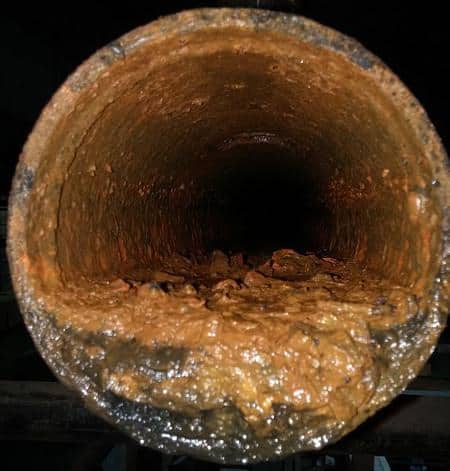
2. Are my fire sprinkler or standpipe pipes obstructed?
Build-up caused by corrosion or the accumulation of any sediment can block and compromise a fire sprinkler or standpipe system. As a preventative measure, NFPA 25 requires an internal pipe inspection every five years to look at the condition of the pipe, assess the water quality, and find any obstructions from organic (slime, tubercles) or inorganic material (pipe coupons, rocks, etc.).
The interior condition of a fire protection piping system can vary widely due to the type of pipe material or water quality. Corrosion is a concern for any water-filled pipe (especially metal ones), and in the case of a dry-pipe or preaction system, the thin layer of water present from previous testing or condensation often accelerates this corrosion as it mixes with oxygen. This is one of the reasons many designers use nitrogen instead of air as the pressurized gas in these systems, as less oxygen means less corrosion.
NFPA 25 requires additional testing and investigation if organic or inorganic materials are found:
From the 2023 edition of NFPA 25
14.2.1.1 An assessment of the internal condition of piping shall be conducted at a minimum of every 5 years or in accordance with 14.2.1.2 for the purpose of inspecting for the presence of foreign organic and inorganic material.
14.2.1.2* Where an assessment frequency has been established by an approved risk analysis, the assessment shall be performed at a frequency determined by the approved risk analysis.
14.2.1.3 Tubercules or slime, if found, shall be tested for indications of microbiologically influenced corrosion (MIC).
14.2.1.4* If foreign organic or inorganic material that has the potential to obstruct pipe or sprinklers is found, an obstruction investigation shall be conducted as described in Section 14.3.
14.3.1* An obstruction investigation shall be conducted for system or yard main piping wherever any of the following conditions exist:
(1) Defective intake for fire pumps taking suction from open bodies of water
(2) Discharge of obstructive material during routine water tests
(3) Foreign materials in fire pumps, dry pipe valves, or check valves
(4) Foreign material in water during drain tests or plugging of inspector’s test connection(s)
(5) Unknown materials heard in the system piping during draining, refilling, or otherwise flowing water through the system
(6) Plugged sprinklers
(7) Foreign organic or inorganic material with the potential to obstruct pipe or sprinklers found in the pipe
(8) Failure to flush yard piping or surrounding public mains following new installations or repairs
(9) Record of broken public mains in the vicinity
(10) Abnormally frequent false tripping of a dry pipe valve(s)
(11) System returned to service after an extended shutdown (i.e., greater than 1 year)
(12) Reason to believe that the sprinkler system contains sodium silicate or highly corrosive fluxes in copper systems
(13) System supplied with raw water via the fire department connection
(14) Leakage caused by internal corrosion
(15)* A 25 percent increase or a 5-second increase for portions of systems protecting dwelling units in the total water delivery time for dry pipe systems and double interlock preaction systems, with normal air pressure on the system and starting at the time of fully opened inspection test connection, when compared to the original system acceptance test
(16)* Failure to maintain a nitrogen supply, except in instances of preplanned impairments, installed in accordance with NFPA 13 when a Hazen-Williams C value of 120 is used for dry and preaction systems.
When one of the above 16 items is found, an obstruction investigation is required. This means the piping system is examined in at least four locations:
- System valve
- Riser
- Cross main
- Branch line
Instead of breaking down piping to do the obstruction investigation, NFPA 25 allows non-destructive testing. This is often done by using a video scope camera inserted through an opening, such as a removed sprinkler. The course of action after finding an obstruction is to clean out the material, repair any damage, and flush the system. Corrosion treatment may be recommended by a contractor to prevent or delay this repeated system maintenance.
Read this other QRFS blog to learn more: “My Fire Sprinkler Pipes are Corroded. Now What?”
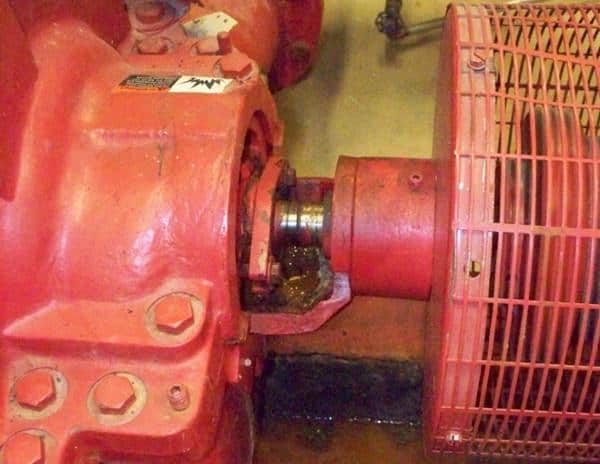
3. Are the fire pump packing glands overtightened?
It’s human nature to fix any water leak, but some leakage from fire pumps is normal — and you can harm the pump if you attempt to “fix” it by tightening the packing gland.
“During normal operation of the fire pump the excess water will drip from the pump. The amount of leakage is controlled by the packing gland,” explains the Minnesota State Fire Marshal. “The packing gland, which is adjustable, should not be over-tightened. Adjusted too tight, the packing dries out, heats up and usually causes a scored shaft.”
What is considered normal leakage? According to Jack Coffelt, “About 60 drops per minute allows the shaft to be lubricated and cooled.” And every fire pump has a means to drain water due to this routine shaft leakage.
From NFPA 25

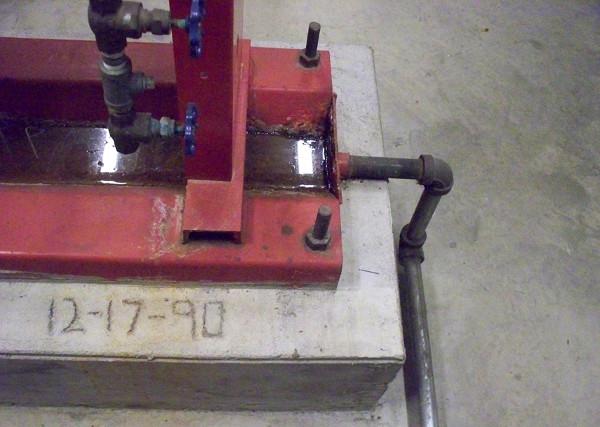
4. Does my sprinkler system have a fire sprinkler head wrench?
NFPA 25 requires every building with a fire sprinkler system to have a cabinet that houses various spare fire sprinkler heads and, for each type of sprinkler installed, a fire sprinkler wrench. The reason is common sense: Personnel must quickly get the system back in service to keep the building protected, and the last thing they need to do is hunt for the right spare sprinkler or wrench. If you would like to avoid a citation during your next system inspection, make sure to have sprinkler wrenches at the ready! Not prepared? Find a replacement here.
So, why do you need sprinkler wrenches, anyway? After a sprinkler activates, a facility manager or contractor needs to install a new sprinkler head. If you’re compliant, a stock of the right spare sprinklers and the specific wrenches they need are readily available in the onsite sprinkler head cabinet. Sprinkler wrenches have special designs and there is usually only one or two useful wrenches for each specific sprinkler type.
From the 2023 edition of NFPA 25
5.4.1.6.5* One sprinkler wrench as specified by the sprinkler manufacturer shall be provided in the cabinet for each type of sprinkler installed to be used for the removal and installation of sprinklers in the system.
Where can you find the right wench for your sprinklers? QRFS has the internet’s largest selection of spare sprinkler head wrenches from Viking, Victaulic, Tyco, Reliable, and Senju. Browse our selection of fire sprinkler head wrenches here.
5. Is my fire protection system missing the required signs?
In addition to needing a general information sign that includes up to 18 pieces of information about the system, a fire safety system needs to have a hydraulic design information sign (or combo general info/hydraulic design sign) that reveals how the system works, plus signage for any fire department connection and signaling system, an antifreeze information sign if antifreeze is used, and signs indicating all control, drain, venting, and test connection valves. Are you missing any? Buy new signs and get back into compliance.
Signs don’t affect system performance, but they do identify critical components and provide crucial information about the system that’s needed for inspections, tests, and maintenance, plus to ensure proper operation. New building owners, contractors, and responding firefighters may not intuitively know every portion of the system; signs quickly get them to the right place and give them the information they need. For example, control valves must always stay open for a sprinkler system to work in an emergency. A control valve may get shut during testing or maintenance and be neglected to be reopened, causing failure down the road. Signs marking these valves help ensure that all of them are checked prior to putting a system back in operation.
Signs are required by every fire protection standard for new systems, including NFPA 13: Standard for the Installation of Sprinkler Systems and NFPA 14: Standard for the Installation of Standpipe and Hose Systems. And NFPA 25 outlines the inspection requirements that make sure these markings are in place.
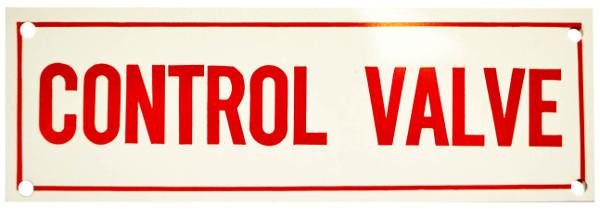
Read our in-depth blog — A Guide to Fire Sprinkler Signs and System Marking — on the exact signage requirements according to NFPA 13. Part of QRFS’ fire sprinkler inspection series also covers the signage inspection requirements according to NFPA 25.
Read our Standpipe Signs and Markings piece to see the needed signage for standpipes.
Missing any signs? Buy new ones.
This concludes part 1 of The 10 Most Common Fire Protection Compliance Issues and How to Avoid Them
Be sure to read part two listing additional frequent fire protection compliance problems. And if you have a question or need help finding a system component, give us a call at 888.361.6662, email support@qrfs.com, or fill out our contact form.
This blog was originally posted at QRFS.com/blog. If this article helped you, check us out at Facebook.com/QuickResponseFireSupply or Twitter @QuickResponseFS.



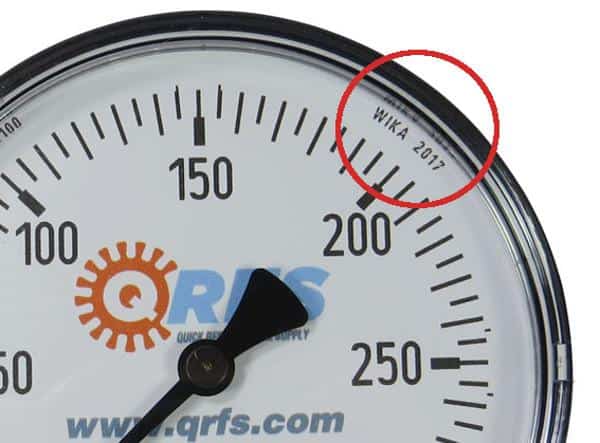
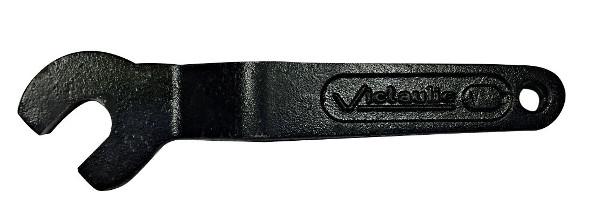
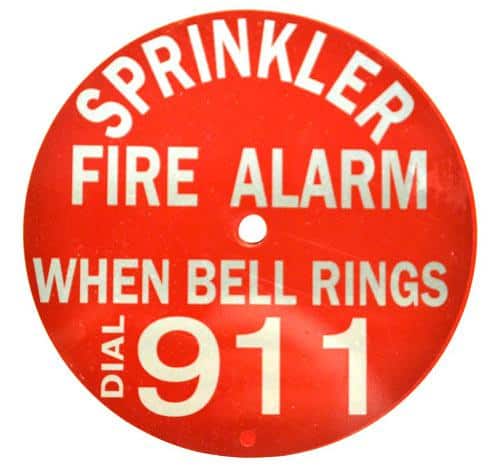

I just wanted to thank you for your VERY informative article!!!! You answered every question I had and more – and the addition of code sections was an added perk!